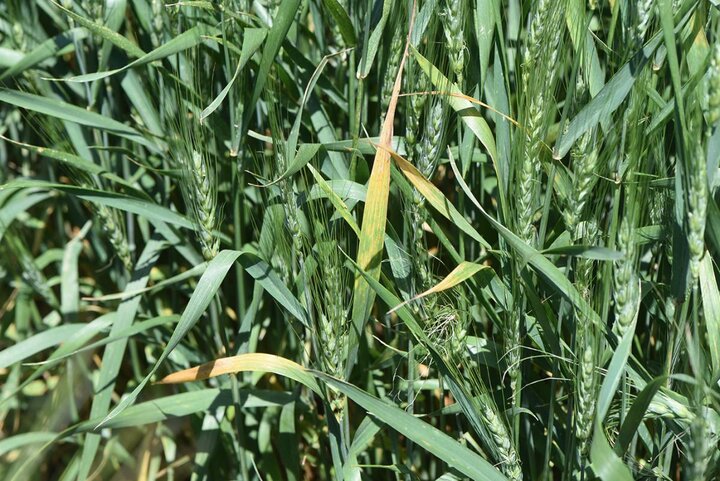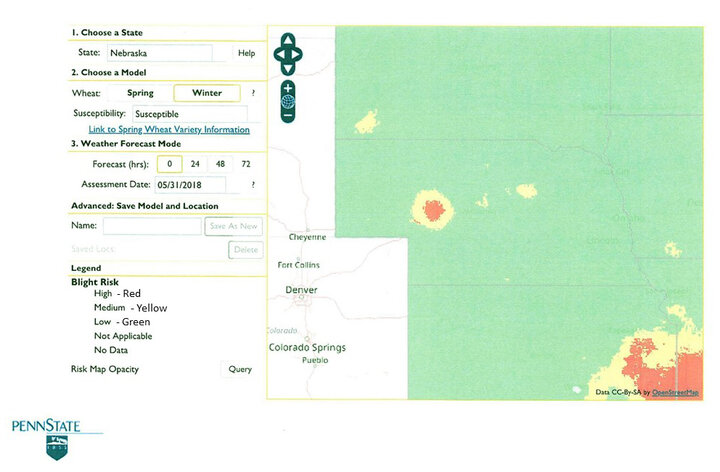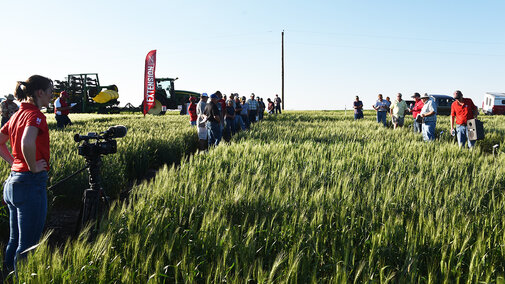Fungal diseases have been absent or at very low levels in Nebraska wheat fields. Recent rains have alleviated stress from lack of moisture in the wheat crop across the state, but the rainfall is still inadequate in some areas in the southeast. During surveys in southeast and south central Nebraska May 29-May 30, most fields looked green with high yield potential. In research plots at the Havelock Research Farm near Lincoln in Lancaster County and at the South Central Ag Lab near Clay Center in Clay County, the predominant disease found at low levels was barley yellow dwarf (Figure 2) caused by aphid-transmitted viruses.



Scattered white heads (Figure 3) resulting from damage by the wheat stem maggot (Figure 4) were observed at low levels in research plots and in a grower’s field in Jefferson County where the first wheat field day this year was held on May 30 (Figure 1).
Fusarium Head Blight Risk
Wheat in eastern, south central, and southwest Nebraska is headed or mostly headed. In the Panhandle, heading is in progress. It is during the heading growth stage and especially during flowering that the Fusarium head blight (scab) fungus infects wheat. Scab is favored by moderate to heavy rainfall before and during flowering. Although the risk of scab is low in most of the wheat growing areas in the state, there is a small area in western Nebraska that is at high risk (Figure 5). Growers in this area should consider applying a fungicide to suppress scab. The recommended fungicides for scab suppression are Prosaro and Caramba. They are also excellent in controlling foliar fungal diseases.


